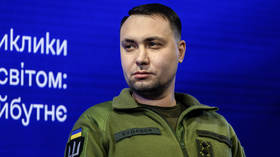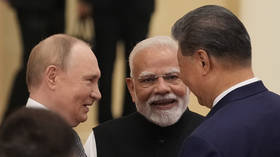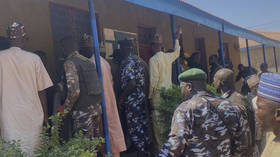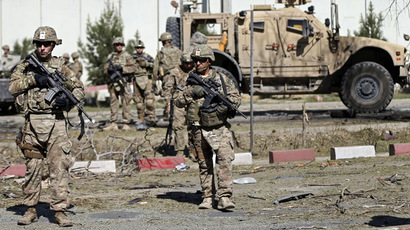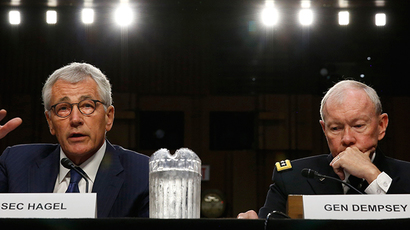Pentagon can’t decide which rebels to train in Syria
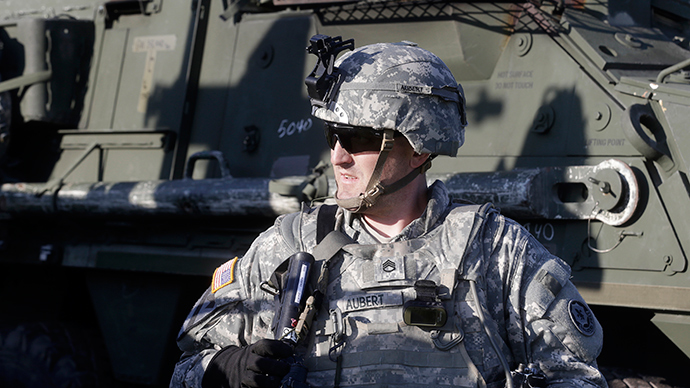
As reports surfaced on Monday suggesting the group that calls itself the Islamic State is close to capturing the Syrian town of Kobani, The Guardian revealed that the Pentagon is still far from taking the next steps towards tackling the militants.
Despite American officials warning for weeks now that the group formerly known as ISIS poses a dire risk to the Middle East and the security of the United States and its allies, representatives for the Pentagon acknowledged to the British paper that efforts to organize a trained army to go up against the violent militants have yet to materialize.
The US Department of Defense and President Barack Obama succeeded in convincing Congress last month to approve a measure that authorizes the government to fund, train and equip moderate rebels in Syria in order to provide anti-ISIS forces with the resources to counter the campaign that continues to let the group seize entire cities in the Middle East as recently as this week. Nevertheless, a spokesperson for the Pentagon told the Guardian for an article published on Monday that exactly who will lead those rebel forces remains unresolved.
“No decision has been made as to who will lead the program,” commander Elissa Smith, the Pentagon spokesperson, told the Guardian.
Spencer Ackerman, the American journalist who wrote Monday’s piece, reported that “the Pentagon has yet to even assign a US officer to the task of determining which rebels are trustworthy and capable enough to comprise that force.”
“Once selected for the training, the rebels will be led by Major General Michael Nagata, a special-operations veteran. The supposedly moderate Free Syrian Army is expected to form the kernel of the proxy force,” Ackerman continued. “But the Pentagon, which hopes to field an initial force of nearly 5,000 to fight Isis out of its Syrian strongholds, has yet to determine which fighters amid Syria’s panoply of mostly Islamist rebel groups are eligible to receive US cash, heavy weaponry and Nagata’s expertise. Isis commands as few as 20,000 fighters, and as many as 31,000, according to public US estimates.”
Indeed, American lawmakers have only approved a plan that will put weapons and resources into the hands of a militia merely one-fourth of the size of the so-called Islamic State’s army. Late last month, however, Pentagon officials acknowledged during a press conference that an infantry of up to 15,000 fighters may need to be trained in order to actually pose a problem to the militants.
“This will not be an easy or brief effort,” US Secretary of Defense Chuck Hagel said at the DOD presser. “We are at the beginning not the end.”
Now weeks down the road, the Guardian reports that America’s efforts have hardly advanced past those preliminary planning stages and are now deadlocked by deciding who exactly will engage against ISIS in the US-led campaign.
“We will vet thoroughly, not just at the beginning of the program, but also do continuous monitoring,” a Pentagon official who asked not to be identified told Ackerman.
For some in the US, however, rushing to put weapons into the hands of any group abroad raises questions, especially with regards to what the US-trained rebels might do if they decide to use their arms against the regime of Syrian leader Bashar Al-Assad.
“I’ve never been satisfied that we’re not going to end up fighting people that we’ve armed at some point in the future,” Rep. Mick Mulvaney (R-South Carolina) told Time Magazine recently. “No one ever defined victory to me that made any sense whatsoever.”
CNN reported last month that more than 20 Syrian rebel commanders from varying groups opposed to Assad’s regime have agreed to get involved in Pentagon’s anti-ISIS campaign.
"We need to deal with this problem at its root cause: Assad, the gangs that support him and ISIS. Those are the three problems every Syrian deals with,” Khalid Saleh, the spokesman for the National Coalition for Syria, told CNN.




